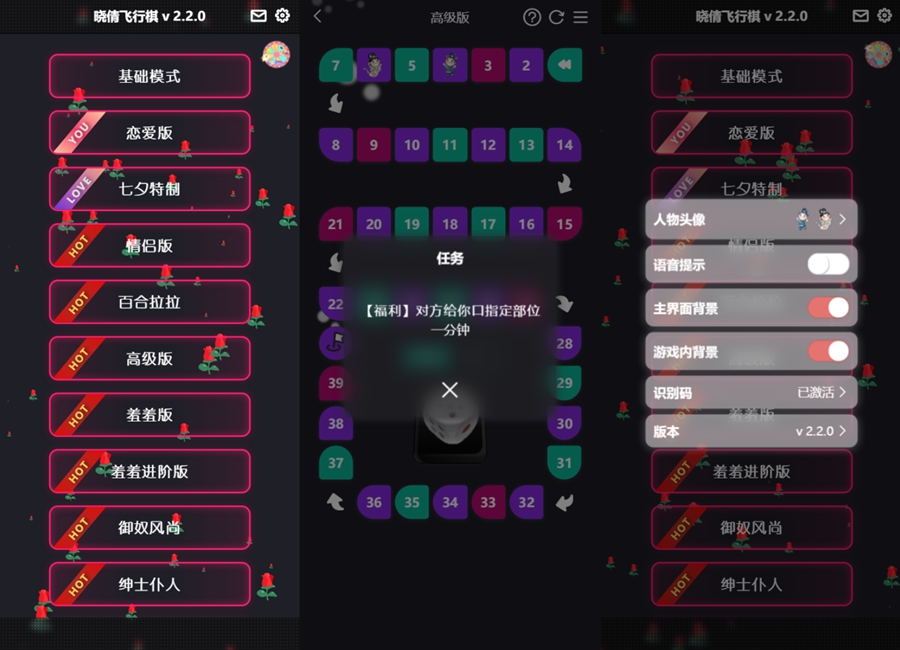首页 > 教程 >
消除if else, 让你的代码看起来更优雅
2023-02-18教程围观次
简介今天给大家介绍如何消除ifelse,让你的代码看起来更优雅,一起来看看吧。前言应该有不少同学有遇到过充斥着ifelse的代码,面对这样的一团乱麻,简单粗暴地继续增量修改常常只会让复杂度越来越高,可读性越来越差。那么是时候重构了,花几分钟看看这篇文章,说不定对你有一丢丢帮助。场景一:根据status显示对应名称优化方案1:object对象conststatusStr={'1':'待付款','2':'
今天给大家介绍如何消除if else, 让你的 代码看起来更优雅,一起来看看吧。
前言
应该有不少同学有遇到过充斥着if else的代码,面对这样的一团乱麻,简单粗暴地继续增量修改常常只会让复杂度越来越高,可读性越来越差。那么是时候重构了,花几分钟看看这篇文章, 说不定对你有一丢丢帮助。
场景一: 根据status显示对应名称
优化方案1: 对象
const statusStr = { '1': '待付款', '2': '待发货', '3': '已发货', '4': '交易完成', '5': '交易关闭', 'default': '',}const getStatus = (status) =>{ return statusStr[status] || statusStr['default']}将判断条件作为对象的属性名,将处理逻辑作为对象的属性值,在按钮点击的时候,通过对象属性查找的方式来进行逻辑判断.
优化方案2: Map对象
const statusStr = new map([ '1': ['待付款'], '2': ['待发货'], '3': ['已发货'], '4': ['交易完成'], '5': ['交易关闭'], 'default': [''],])const getStatus = (status) =>{ let actions = statusStr.get(status) || statusStr.get('default') return actions[0];}这样写用到了es6里的Map对象,那么Map对象和 对象有什么区别呢?
一个对象通常都有自己的原型,所以一个对象总有一个"prototype"键。 一个对象的键只能是字符串或者Symbols,但一个Map的键可以是任意值。 你可以通过size属性很容易地得到一个Map的键值对个数,而对象的键值对个数只能手动确认。
场景二:多个condition对应名称
现在把问题升级一下, 以前按钮点击时候只需要判断status,现在还需要判断用户的身份:
「举个栗子:」
const onButt = (status,identity)=>{ if(identity == 'guest'){ if(status == 1){ //do sth }else if(status == 2){ //do sth }else if(status == 3){ //do sth }else if(status == 4){ //do sth }else if(status == 5){ //do sth }else { //do sth } }else if(identity == 'master') { if(status == 1){ //do sth }else if(status == 2){ //do sth }else if(status == 3){ //do sth }else if(status == 4){ //do sth }else if(status == 5){ //do sth }else { //do sth } }}上面的例子我们可以看到,当你的逻辑升级为二元判断时,你的判断量会加倍,你的代码量也会加倍,这时怎么写更清爽呢?
优化方案1: 将condition用字符拼接形式存在Map对象里
const actions = new Map([ ['guest_1', ()=>{/*do sth*/}], ['guest_2', ()=>{/*do sth*/}], ['guest_3', ()=>{/*do sth*/}], ['guest_4', ()=>{/*do sth*/}], ['guest_5', ()=>{/*do sth*/}], ['master_1', ()=>{/*do sth*/}], ['master_2', ()=>{/*do sth*/}], ['master_3', ()=>{/*do sth*/}], ['master_4', ()=>{/*do sth*/}], ['master_5', ()=>{/*do sth*/}], ['default', ()=>{/*do sth*/}],])const onButt = (identity,status)=>{ let action = actions.get(`${identity}_${status}`) || actions.get('default') action.call(this)}上述代码核心逻辑是:把两个条件拼接成字符串,并通过以条件拼接字符串作为键,以处理函数作为值的Map对象进行查找并执行,这种写法在多元条件判断时候尤其好用。
优化方案2: 将condition用字符拼接形式存在 对象里
const actions = { 'guest_1':()=>{/*do sth*/}, 'guest_2':()=>{/*do sth*/}, //....}const onButt = (identity,status)=>{ let action = actions[`${identity}_${status}`] || actions['default'] action.call(this)}优化方案3: 将condition用 对象形式存在Map对象里
可能用查询条件拼成字符串有点别扭,那还有一种方案,就是用Map对象,以 对象作为key:
const actions = new Map([ [{identity:'guest',status:1},()=>{/*do sth*/}], [{identity:'guest',status:2},()=>{/*do sth*/}], //...])const onButt = (identity,status)=>{ let action = [...actions].filter(([key,value])=>(key.identity == identity && key.status == status)) action.forEach(([key,value])=>value.call(this))}场景三:根据status做出相应操作
「举个栗子:」
function init () { if (isAnswer === 1) { if (isOldUser === 1) { // ... } else if (isOldUser === 2) { // ... } } else if (isAnswer === 2) { if (isOldUser === 1) { // ... } else if (isOldUser === 2) { // ... } } else if (isAnswer === 3) { if (isOldUser === 1) { // ... } else if (isOldUser === 2) { // ... } }}优化方案1: 查找表,职责链查找表
const rules = [ { match (an, old) {if (an === 1) {return true}}, action (an, old) { if (old === 1) {// ...} else if (old === 2) {// ...} } }, { match (an, old) { if (an === 2) {return true } }, action (an, old) { if (old === 1) {// ...} else if (old === 2) {// ...} } }, { match (an, old) {if (an === 3) {return true}}, action (an, old) { if (old === 1) {// ...} else if (old === 2) {// ...} } }]function init (an, old) { for (let i = 0; i < rules.length; i++) { // 如果返回true if (rules[i].match(an, old)) { rules[i].action(an, old) } }}init(isAnswer, isOldUser)虽然可能看着是治标不治本,其实不然,init函数的复杂度大大的降低了。我们已经把控制流程的复杂逻辑,拆分到determineAction函数中
优化方案2: 函数式编程
import R from 'ramda'var fn = R.cond([ [R.equals(0), R.always('water freezes at 0°C')], [R.equals(100), R.always('water boils at 100°C')], [R.T, temp => 'nothing special happens at ' + temp + '°C']]);fn(0); //=> 'water freezes at 0°C'fn(50); //=> 'nothing special happens at 50°C'fn(100); //=> 'water boils at 100°C'场景四: 根据范围去进行不同处理
「举个栗子:」比如大家可能会遇到类似下面的需求:比如某平台的信用分数评级,超过700-950,就是信用极好,650-700信用优秀,600-650信用良好,550-600信用中等,350-550信用较差。
function showGrace(grace) { let _level=''; if(grace>=700){ _level='信用极好' } else if(grace>=650){ _level='信用优秀' } else if(grace>=600){ _level='信用良好' } else if(grace>=550){ _level='信用中等' } else{ _level='信用较差' } return _level;}优化方案1: 用look-up表,把配置数据和业务逻辑分离
function showGrace(grace,level,levelForGrace) { for(let i=0;i<level.length;i++){ if(grace>=level[i]){ return levelForGrace[i]; } } //如果不存在,那么就是分数很低,返回最后一个 return levelForGrace[levelForGrace.length-1];}let graceForLevel=[700,650,600,550];let levelText=['信用极好','信用优秀','信用良好','信用中等','信用较差'];小结
很多情况下我们都可以使用更灵活的方式去替代if else以及switch, 但也不是所有的if else都需要替代, 视情况而定。
下载链接:网站源码/小程序源码/网站模板下载
下载排行
- 风水起名八字算命易经周易源码程序 2019开运网付费开源商业版 带详细配置教程+支付
- 一款自适应的聊天网站-匿名在线聊天室PHP源码
- WordPress爱导航主题 1 1 3 简约大气网站导航源码网址导航模板
- 某鱼最近卖的很火蓝色版微信去水印小程序源码+接口
- 新的任务悬赏平台源码
- 简约大气的图片相册类织梦网站模板/DedeCMS自适应手机版图片图集网站源码下载
- 主题巴巴WordPress主题合辑打包下载+主题巴巴SEO插件
- 新版多功能去水印工具微信小程序源码下载+带流量主功能
- 最新知识付费变现小程序源码/独立后台知识付费小程序源码/修复登录接口
- Destoon7.0绿色行业B2B大气平台门户全站源码/带手机版+商务中心网站商城系统源码










